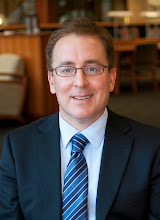In public protests around the world, governments have taken steps to deny or interefe with protesters' access to the Internet and to cellular service. Such access has been critical in terms of facilitating the organization of public protests against repressive regimes. Cut off the network, and you may prevent or at least weaken the protest. Interference with network access also limits the ability of protesters to transmit information about what is happening on the ground.
I wouldn't call San Francisco's BART, a public transportation agency, a repressive regime. However, the agency recently cut off cell service in the subway system in advance of a planned protest. Protesters had indicated that they would use social networking services to coordinate their protest and to report on the number and location of police.
I tend to agree with Eugene Volokh's conclusion that BART's temporary restriction is constitutional under current First Amendment doctrine. In so-called nonpublic forums, government can restrict speech based on its content so long as the restriction is both viewpoint neutral and reasonable. The restriction here is clearly viewpoint-neutral. But is it reasonable? Arguably so, since a significant protest might have interfered with BART service and disrupted travel in the system. Under current public forum doctrine, that's probably sufficient to uphold the restriction.
But where does that logic lead? Might it result in similar restrictions being upheld in public areas that are designated for speech activity? Is the service interruption really so different from barricades, fences, and other physical restrictions that limit or in some cases prevent effective communication? All of these things interfere with, but do not entirely prevent, public speech. A service interruption makes it more difficult to organize a protest. But so do police surveillance, protest zones, permit applications, etc. Perhaps, as Volokh suggests, the distinction lies in the content-based nature of the service interruption. That was clear in the BART case; but it might not be conceded in others. Or is a service interruption a presumptively unconstitutional prior restraint on speech? Courts may ultimately have to address this issue, as authorities seek new means of regulating protests in networked public places.
Wednesday, August 17, 2011
Wednesday, August 3, 2011
Oakland's "Bubble Ordinance" Invalidated As Applied to Sidewalk Counselor
In Hoye II v. City of Oakland (9th Cir. 2011), the court invalidated Oakland's "bubble" ordinance, as applied to an abortion clinic sidewalk counselor. I especially liked this opening passage:
Eugene Volokh has more on the decision here.
Throughout our nation's history, Americans have counted on the First Amendment to protect their right to ask their fellow citizens to change their mind. Abolitionists, suffragists, socialists, pacifists, union members, war protestors, religious believers, civil rights campaigners, anti-tax activists, and countless others have appealed to the principle, enshrined within the First Amendment, that in a democracy such as ours, public debate must be robust and free and that, for it to be so, the Constitution's protection of the freedom of speech must extend to the sidewalk encounter of the proselytizer and his prospective convert. These instances of public persuasion constitute the lifeblood of a self-governing people's liberty, and so even when the beliefs propagated seem to some the “rankest error” that “naturally would offend” any listener, our founding charter deems such encounters “in the long view, essential to enlightened opinion and right conduct on the part of the citizens of a democracy.” Cantwell v. Connecticut, 310 U.S. 296, 309–310 (1940). This case calls on us to apply that principle.As the court indicated, the main problem with the enforcement of this ordinance, which restricts counseling and other forms of speech within the personal space of abortion clinic patients, was that authorities did not apply it even-handedly to counselors who encouraged women to utilize the facilities. The record indicated that only sidewalk counselors who sought to convince women not to obtain an abortion were arrested and prosecuted under the ordinance. I suspect this is typically the case -- i.e., a bubble ordinance is couched in neutral terms, but applied only to those who are near the abortion clinic to protest its activities and to discourage women from obtaining and abortion.
Eugene Volokh has more on the decision here.
Subscribe to:
Posts (Atom)

